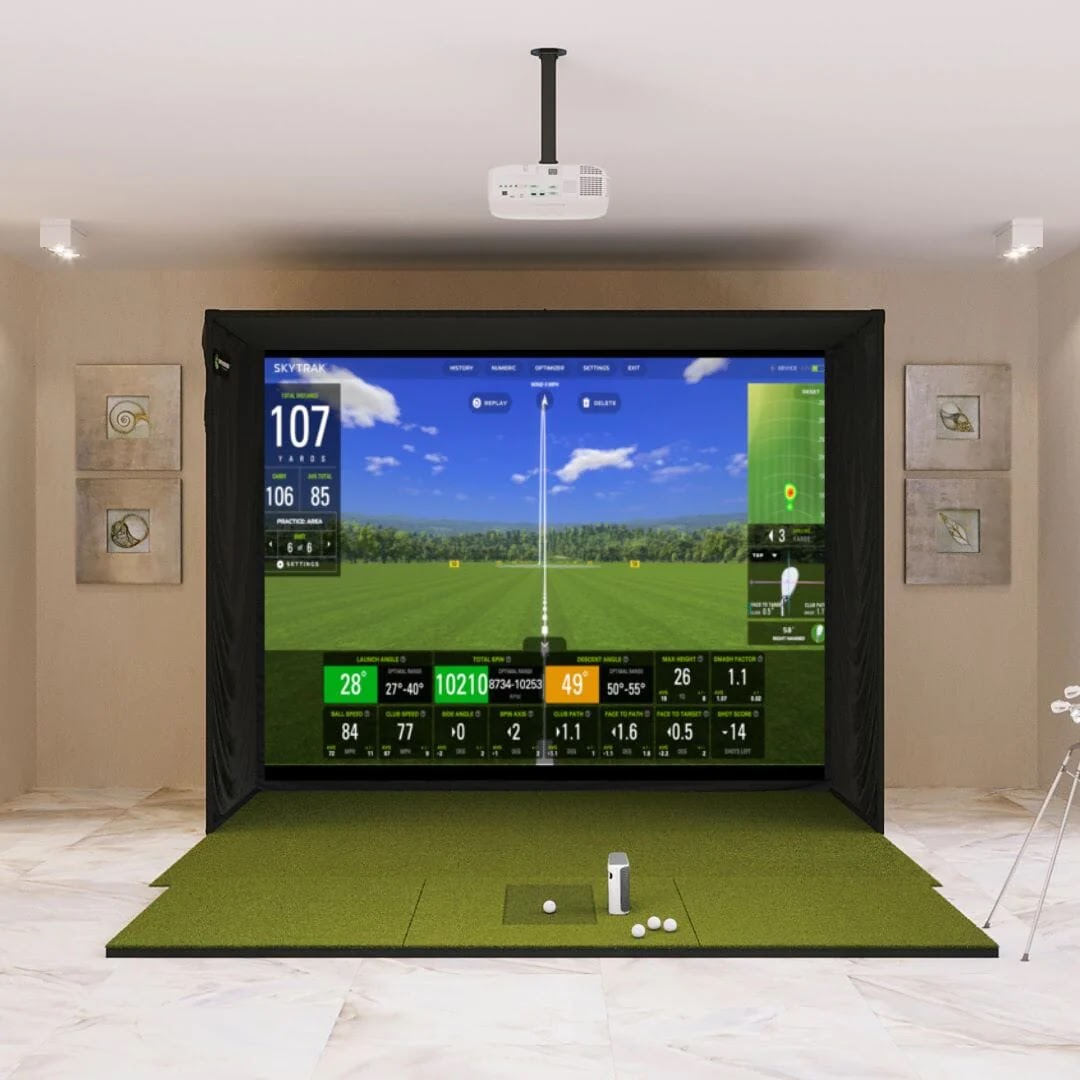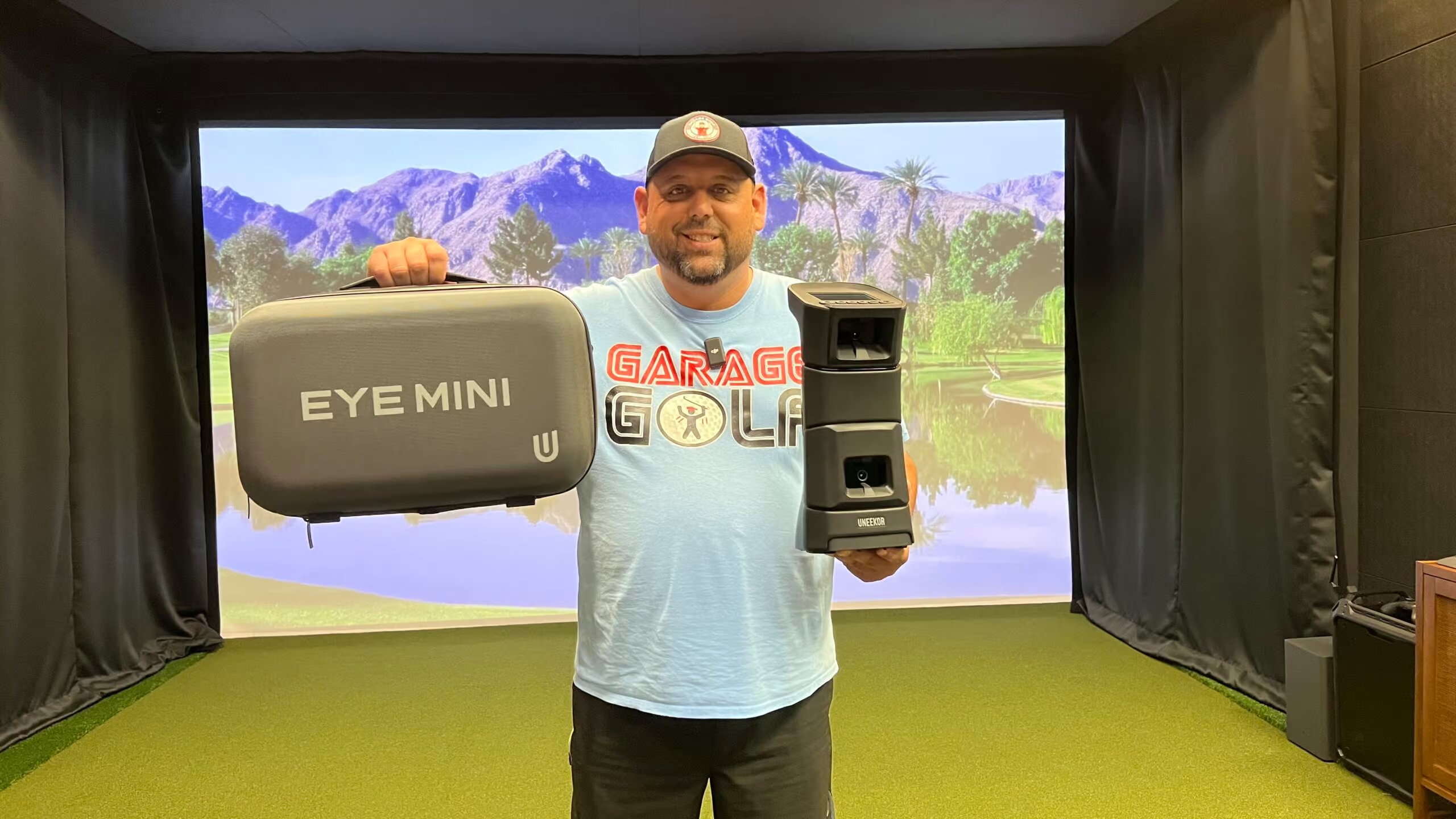Basement or Garage Best? Comparing Rooms by Ceiling Clearance Needs
When designing an at-home indoor golf simulator setup, a common dilemma arises around choosing installation locations - do you convert garage space into a virtual driving range or instead invest in basement renovations to carve out an underground golf sanctuary?
Beyond floor plan preferences, the answer around the ideal venue commonly boils down to ceiling height for golf simulator restrictions affecting full golf swing allowances. Since advanced golf simulator systems today rely on overhead tracking equipment to capture comprehensive performance data, adequate vertical clearance becomes imperative for maximizing functionality.
In this piece, we dive into differentiating garage against basement simulation bays specifically around critical Ceiling Height for Golf Simulator factors. By comparing room standards, golfers can best decide where performance and enjoyment potentials optimize.
Garage Height Realities
The most convenient blank canvas for constructing home golf simulators, garages must contend with inherent infrastructure obstacles. Between protruding ceiling beams every few feet and pipes or ductwork crisscrossing overhead, sizable obstructions reside above ceiling framing in home garages that limit net clearance.
While interior volume appears reasonable, myriad structural components mean actual unimpeded height allowances commonly run just 8 to 9 feet. Without extensive reworking, garages rarely provide the full 10+ foot ceilings advanced Garage Golf Simulator tracking equipment prefers. Swing restrictions often result when drivers barely avoid rafters.
Basement Advantages
Contrary to confined garages, basements offer much more unrestricted vertical void space for installing simulator bays. Rarely impacted by horizontal beams or ductwork, clean wall-to-wall spans enable excellent height dimensions reaching 14+ feet.
Such overhead clearance leeway guarantees zero restrictions even when swinging the longest clubs. Full driver follow-throughs avoid contact issues with protective netting, lighting, or screens. Tracking equipment mounts overhead unimpeded as well to fully capture all ball and club dynamics.
For golfers unwilling to modify garage frameworks, utilizing open-span basements delivers optimal virtual golf simulator playability through maximum height standards out the gate.
Consider Creative Adjustments
Before abandoning garage renovation dreams over height limitations, several creative adjustments can help overcome restrictions:
- Install recessed flooring or ramps
- Adjust tracking equipment downward
- Incorporate partial overhead netting
- Seek variance approvals for height extensions
With innovative customization and localized reigning in of tallest swing trajectories, low-clearance garages can still provide sufficient dimensions for reasonable functionality given swing modifications. But for true unhindered playability, basement bays naturally accommodate full golf simulator ceiling height needs at optimal levels.
Both locations bring certain advantages around overall simulation room planning. But when factoring in unobstructed ceiling height capability specifically, basements beat out garages hands down. Contact our experts as you explore building your ultimate Home Golf Simulators to maximize experience within space confines!
Explore further and read more.: https://mygaragegolf.com/golf-heaven-or-headache-proper-ceiling-height-for-golf-simulators/



Comments
Post a Comment